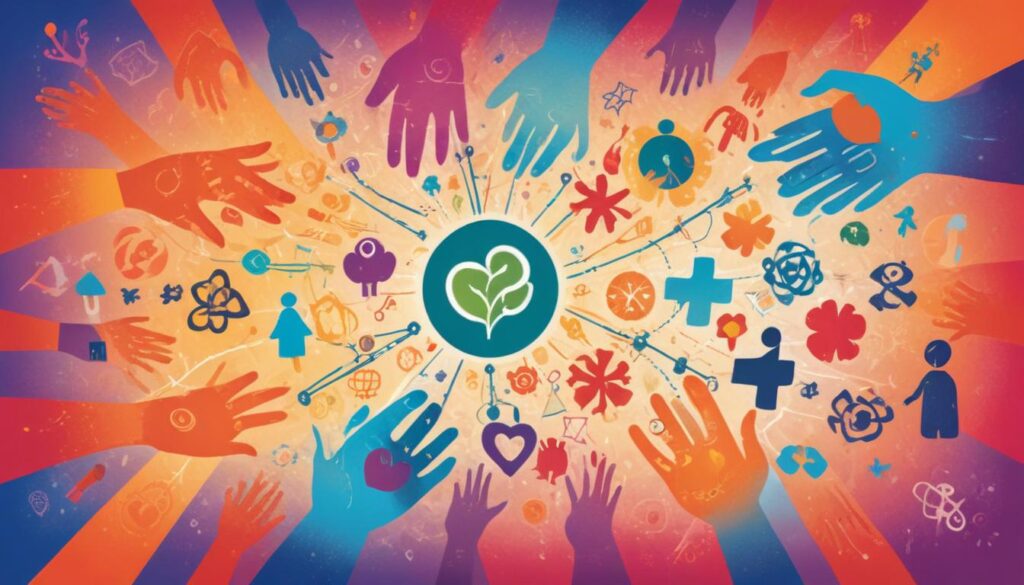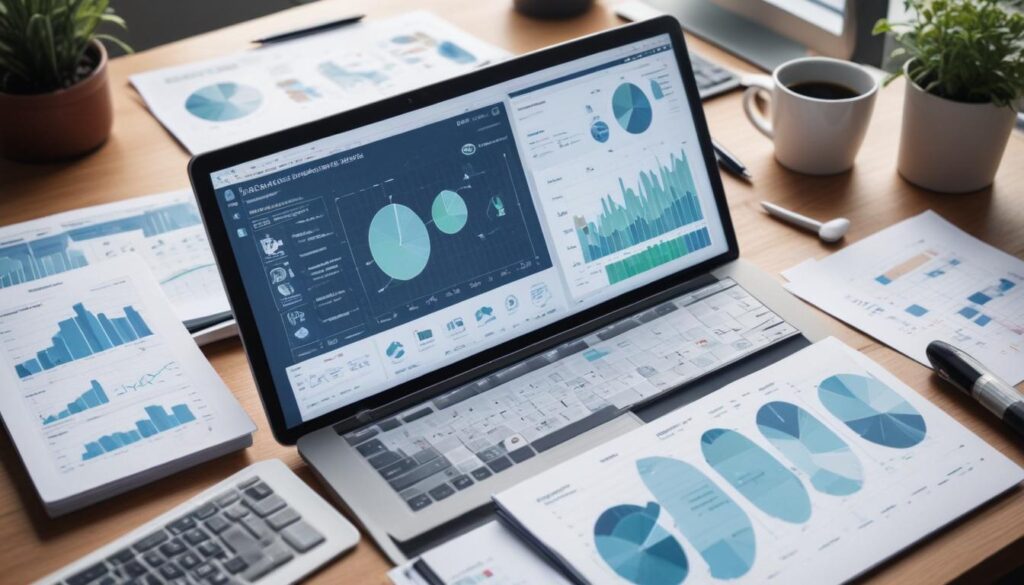Achieving flow state enhances productivity and creativity in the workplace by fostering deep focus and engagement, which can be cultivated through clear goals, distraction-free environments, and supportive leadership.
Discover how to achieve **flow state** for improved productivity. This mental state fosters creativity and problem-solving in business. Ready to enhance your focus?
Understanding Flow State
Understanding Flow State is pivotal for enhancing productivity in any work environment. This psychological state occurs when individuals are fully immersed in activities they enjoy, leading to a seamless experience of energy, focus, and creativity. Achieving flow can transform mundane tasks into engaging challenges, enhancing overall job satisfaction.
One key aspect of flow is deep focus. When distractions are minimized, individuals can excel in their roles. To cultivate this state, it’s essential to create a work atmosphere that allows for uninterrupted concentration. This can involve setting specific hours for focused tasks and using techniques like the Pomodoro Technique to maintain engagement.
Moreover, understanding the components that lead to flow can help in designing tasks appropriately. These include ensuring that the challenge level matches individual skill. Too easy, and boredom ensues; too difficult, and frustration sets in. Striking the right balance is crucial.
Flow state also has positive effects on team dynamics. When employees experience flow, it results in higher productivity and more creative problem-solving. Consequently, companies that nurture this environment can expect improved outcomes and a more motivated workforce.
The Importance of Deep Focus
The importance of deep focus cannot be overstated in today’s fast-paced work environment. It is the foundation for achieving flow state, where individuals can work at their highest capacity. In order to foster deep focus, it is crucial to eliminate distractions that disrupt concentration. Simple changes, such as putting away mobile devices or using noise-canceling headphones, can significantly improve focus.
One effective strategy is to create designated work environments that promote concentration. A clutter-free and organized workspace can reduce mental clutter, making it easier to dive into challenging tasks. Additionally, incorporating elements of nature, such as plants or natural lighting, can boost mood and enhance focus.
Moreover, incorporating regular breaks into the work routine is essential. Research shows that taking short, timed breaks can refresh the mind and help maintain energy levels. Techniques like the Pomodoro Technique encourage focused working periods followed by brief rests, which can maximize productivity.
Understanding the psychology behind deep focus helps in recognizing its effects on creativity and problem-solving. When in a state of deep focus, individuals can produce higher quality work and come up with innovative solutions. Emphasizing the practice of deep focus can lead to improved performance and job satisfaction.
Flow State and Employee Engagement
Flow state and employee engagement are intricately linked concepts that can drive productivity and satisfaction in the workplace. When employees enter a flow state, they often experience heightened focus and motivation. This immersive experience fosters a deeper connection to their tasks, resulting in enhanced engagement.
To support employees in achieving flow, organizations should create a culture that values autonomy and mastery. Allowing team members to take ownership of their work leads to a greater sense of responsibility and investment in outcomes. Moreover, providing opportunities for skill development ensures that employees are continuously challenged at an appropriate level.
Regular feedback is essential in this process. Constructive feedback helps employees understand their strengths and areas of improvement, facilitating an environment conducive to flow. It encourages workers to set specific goals, which is important in maintaining motivation and engagement.
Additionally, fostering collaborative environments can enhance flow state. When employees work together, they share ideas and support each other, which can lead to collective flow experiences. This collaboration not only enhances individual enjoyment but also contributes to a stronger team dynamic, ultimately driving better results for the organization.
Strategies to Achieve Flow
Strategies to achieve flow are essential for enhancing productivity and job satisfaction in the workplace. One effective approach is to set clear goals. When employees know what they need to accomplish, it becomes easier to focus and immerse themselves in their tasks.
Another important strategy involves creating a distraction-free environment. This can be achieved by designating specific times for deep work, minimizing interruptions from emails or notifications. Utilizing tools like website blockers can help employees maintain their focus, allowing for longer periods of concentrated effort.
Incorporating the right level of challenge is key to maintaining an engaging work experience. Tasks should be neither too easy nor too difficult, striking a balance that invites employees to stretch their skills. Providing opportunities for skill development ensures that employees can take on challenges that stretch their capabilities.
Additionally, encouraging regular breaks contributes to sustained flow. Techniques like the Pomodoro Technique, which suggests working for 25 minutes followed by a 5-minute break, can boost overall focus and productivity while preventing burnout.
Quieting the Mind for Clarity
Quieting the mind for clarity is essential for achieving a productive flow state. In today’s fast-paced environment, distractions abound, making it challenging to maintain focus. One effective method for enhancing mental clarity is through mindfulness practices. Techniques such as meditation and deep breathing exercises can help individuals center their thoughts and reduce anxiety.
Setting aside time each day for mindfulness can lead to significant improvements in concentration. Creating a calm environment free from noise and interruptions is also crucial. This can involve finding a quiet space, using soundproofing, or incorporating soothing background music to aid in mental relaxation.
Another strategy is to prioritize tasks effectively. By organizing tasks based on their urgency and importance, individuals can focus their energy where it matters most. This strategic approach can minimize overwhelm and allow for deeper engagement with each task.
In addition, journaling can serve as a powerful tool for clearing the mind. Writing down thoughts, ideas, and worries can alleviate mental clutter, creating space for clarity. Implementing these techniques consistently fosters a mindset conducive to productivity, ultimately enhancing overall performance at work.
Building a Sustainable Work Environment
Building a sustainable work environment is crucial for enhancing employee well-being and improving overall productivity. This approach not only benefits the workforce but also supports the planet. One effective strategy is to incorporate eco-friendly practices into daily operations. This can involve using sustainable materials, reducing waste, and implementing recycling programs.
Creating a workspace that promotes health and well-being is essential. Consider utilizing natural light and incorporating biophilic design, which includes plants and natural elements. This connection to nature has been shown to reduce stress and increase concentration among employees.
Furthermore, offering flexible working arrangements can contribute to a more sustainable work environment. Remote work options and flexible schedules allow employees to balance their personal and professional lives better, resulting in higher job satisfaction and retention rates.
Engaging employees in sustainability initiatives is also critical. Encouraging participation in green initiatives fosters a sense of community and shared responsibility. This can include group efforts like community clean-up days or energy-saving challenges. By prioritizing sustainability, companies not only enhance their corporate social responsibility but also create a positive workplace culture.
Impact on Leadership and Decision Making
The impact on leadership and decision making is profound when fostering a flow-enhancing environment. Leaders play a crucial role in shaping workplace culture, and their approach can significantly influence employee engagement. Effective leaders recognize the importance of creating conditions that enable employees to achieve a flow state. This can be accomplished by fostering trust and open communication.
When employees feel valued and understood, they are more likely to take initiative and engage deeply in their work. Leaders should encourage feedback and be approachable, facilitating discussions that inspire creativity and innovation. Setting clear expectations also helps employees align their objectives with the organization’s goals, promoting a focused work atmosphere.
Decision making can also improve in a flow-enhanced environment. Teams that operate in a state of flow often exhibit better collaboration, leading to more thoughtful and effective solutions. When leaders empower their teams and support a culture of experimentation, they can harness diverse perspectives and insights, driving more informed decision-making processes.
Moreover, leaders who model behaviors conducive to flow, such as mindfulness and focus, create a ripple effect. Their actions serve as a guide for employees, ultimately enhancing productivity and job satisfaction throughout the organization.
Real-world Examples of Flow in Action
Real-world examples of flow in action illustrate the powerful benefits of achieving this state in various industries. One notable example is found in the field of software development. Developers often experience flow when they are working on challenging coding problems. In these situations, they become fully immersed in their tasks, resulting in heightened creativity and productivity.
Another instance can be seen in sports. Athletes frequently describe entering a flow state during competition, where they lose track of time and their surroundings. This allows them to perform at their peak levels, responding instinctively without overthinking their actions. Professional athletes like Michael Jordan and Serena Williams have shared how flow moments have led to some of their greatest performances.
In the creative industries, artists and writers also leverage flow to enhance their work. Famous authors, such as Stephen King, emphasize the importance of finding a quiet space and eliminating distractions to tap into their creative flow. This dedication often results in remarkable storytelling that captivates audiences.
Finally, in the corporate landscape, companies that encourage flow through flexible work policies, supportive environments, and meaningful challenges often see significant improvements in employee engagement and innovation. These examples showcase how fostering flow can lead to exceptional outcomes across various fields.
In Summary, Embracing Flow for Success
Understanding and implementing flow in the workplace can significantly enhance employee productivity and satisfaction. By fostering an environment that supports deep focus, clear goals, and healthy communication, organizations can boost engagement and innovation.
Real-world examples demonstrate how flow has transformed various fields, from software development to athletics and the arts. These stories illustrate that achieving flow can lead to remarkable performance and creativity.
By prioritizing strategies to cultivate flow, leaders can create a more dynamic and effective workplace. This not only benefits the employees but also drives overall business success. Therefore, embracing flow is not just a trend; it is a vital component of thriving in today’s fast-paced world.
Frequently Asked Questions
What is flow state and why is it important in the workplace?
Flow state is a mental state of complete immersion and focus on a task. It is important because it leads to higher productivity, creativity, and job satisfaction.
How can leaders foster a flow environment for their teams?
Leaders can foster a flow environment by setting clear goals, promoting open communication, and minimizing distractions to enhance employee focus.
What strategies can be used to achieve flow in daily work routines?
Strategies include defining specific tasks, creating designated distraction-free zones, and incorporating regular breaks to maintain energy and focus.
Are there real-world examples of flow in action?
Yes, examples include software developers reaching peak productivity during coding sessions and athletes achieving peak performance during competitions.
How does a sustainable work environment contribute to flow?
A sustainable work environment promotes well-being with natural elements and flexible policies, helping employees feel more engaged and focused.
What are the long-term benefits of fostering flow in an organization?
Long-term benefits include improved employee retention, enhanced creativity, and increased overall performance, leading to greater business success.


